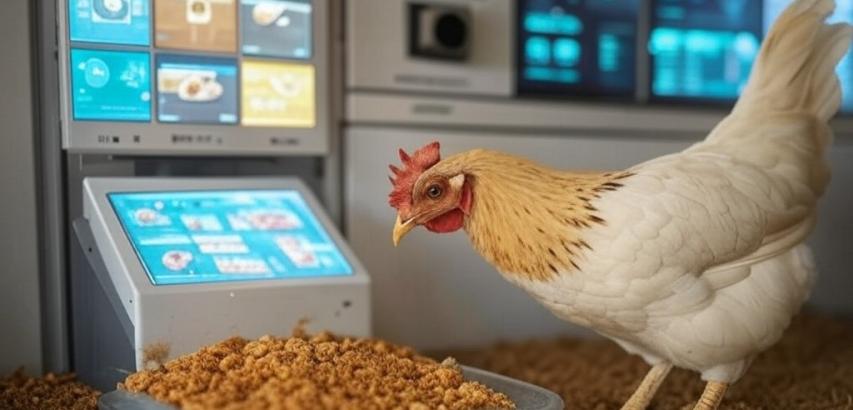In modern poultry farming, technology has transformed traditional feeding methods into highly efficient, automated processes. Chicken feeding technology enhances productivity, reduces waste, and ensures optimal nutrition for poultry, making it an essential part of commercial and sustainable farming practices.
Types of Chicken Feeding Technology
Automatic Feeders
Distribute feed at set intervals or on-demand.
Reduce manual labor and ensure consistent feed distribution.
Can be programmed for specific quantities based on flock size and requirements.
Sensor-Based Feeding Systems
Equipped with sensors to monitor feed levels and chicken activity.
Automatically dispense feed when levels are low.
Prevent overfeeding and wastage by stopping the feed supply when chickens are inactive.
Smart Feed Management Systems
Integrated with software to track feed usage and monitor nutritional intake.
Provide data analytics on feed efficiency, consumption patterns, and costs.
Precision Feeding Technology
Uses algorithms and weight sensors to dispense feed based on individual chicken needs.
Ideal for selective breeding or managing high-performance flocks like broilers and layers.
Mobile-Controlled Feeding Systems
Allow farmers to control feeding schedules, monitor feed levels, and adjust settings remotely via smartphone apps.
Provide real-time alerts for maintenance or low feed levels.
Automated Feed Mixing Machines
Blend ingredients to prepare a balanced feed according to nutritional requirements.
Save time and ensure uniformity in feed quality.
Features of Advanced Feeding Technology
Time-Saving
Automates feeding processes, reducing manual labor and increasing efficiency.
Uniform Feed Distribution
Ensures equal access to feed for all chickens, preventing competition and improving growth.
Customizable Feeding Programs
Allows farmers to set specific feeding schedules, portion sizes, and nutrient mixes based on flock needs.
Energy Efficiency
Many systems are designed to consume less energy, reducing operational costs.
Scalability
Suitable for small farms and large commercial poultry operations.
Data-Driven Insights
Advanced systems provide real-time data on feed consumption, helping farmers make informed decisions to optimize production.
Benefits of Chicken Feeding Technology
Improved Nutrition
Ensures that chickens receive the right nutrients at the right time for optimal health and productivity.
Reduced Feed Wastage
Precision systems minimize spillage and overfeeding, saving costs.
Enhanced Productivity
Proper feeding schedules lead to better growth rates, higher egg production, and healthier flocks.
Labor Efficiency
Automating feeding processes allows farmers to focus on other aspects of farm management.
Hygiene and Disease Control
Keeps feed clean and reduces contamination risks, promoting a healthier environment.
Sustainability
Technology helps optimize resource use, making poultry farming more sustainable and eco-friendly.
Emerging Trends in Chicken Feeding Technology
IoT Integration
Internet of Things (IoT) devices connect feeders, sensors, and management systems for seamless operation.
Artificial Intelligence (AI)
AI algorithms analyze data to predict feed requirements, optimize feeding schedules, and detect abnormalities in flock behavior.
Solar-Powered Feeders
Energy-efficient solutions for remote or off-grid poultry farms.
Robotics in Feeding
Robots can distribute feed evenly, monitor flock behavior, and adapt feeding based on real-time observations.
Blockchain for Feed Traceability
Ensures transparency in feed sourcing and quality, enhancing consumer trust in poultry products.
Challenges in Adopting Feeding Technology
High Initial Costs
Advanced feeding systems can be expensive to install, particularly for small-scale farmers.
Technical Expertise
Farmers need training to operate and maintain these systems effectively.
Maintenance Requirements
Regular upkeep is essential to prevent system failures and ensure accurate operation.
Integration Issues
Combining new technologies with existing farm infrastructure can be challenging.
Chicken feeding technology has revolutionized poultry farming by making feeding processes more efficient, precise, and sustainable. Although the initial investment can be high, the long-term benefits of improved productivity, reduced waste, and healthier flocks make it a worthwhile endeavor. As technology continues to evolve, it will play an increasingly vital role in shaping the future of poultry farming.
 |  |  |
